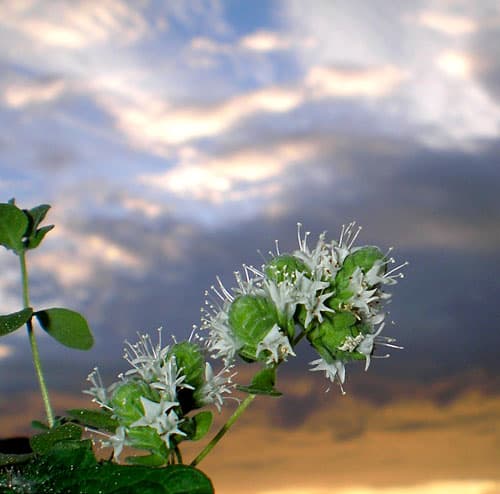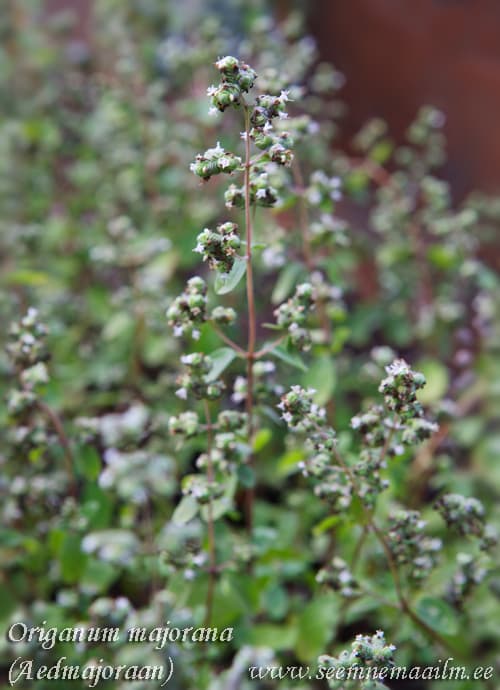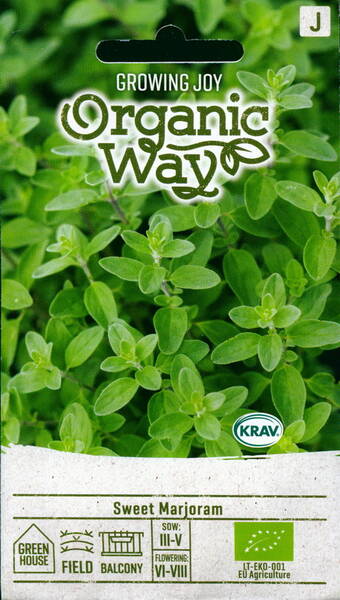The gardener's pride!
Common marjoram is an annual or biennial plant (subshrub). Height 20-50 cm. Good honey plant.
Grown in light, nutrient-rich soils. Marjoram is thermophilic, in the early stages of development it is sensitive to frost.
In the south, it is grown in open ground, in the middle lane and in the northern regions - through seedlings. In the latter case, seeds are sown at the beginning of April (at the rate of 0.1 g to obtain 200 plants).
Marjoram seeds are very small, they do not require deepening, it is enough to roll them in. Seedlings appear on 20-23 days.
Seedlings are planted in the ground after the end of the frost, according to the scheme 20 by 25 cm. Care consists in loosening row spacings and weeding.
Harvest the marjoram before flowering. The plant is cut about 6 cm from the ground, then it sprouts again, and a second rich harvest is ready by autumn.
1.0 g = 2500-4000 seeds.


Eng.: Sweet marjoram, knotted marjoram. Suom.: Maustemeirami, meirami. Sven.: Mejram, kloka gumman, myrrah, origano, sluga gubbem. Bot. syn.: Majorana hortensis Moench, Majorana majorana L., Origanum majoranoides Willd.
* In the Middle Ages, marjoram was grown for its aroma and beauty. Before people became acquainted with the valuable qualities of hops, marjoram was already used instead in brewing, and in France - in winemaking. They also added it to the water for washing hands during solemn meals.
Today, marjoram as a spice is used very widely: it is added to soups, sauces to stews, put in sausages, minced meat and pates.
Marjoram leaves and flowers contain up to 0.4% essential oil. Young shoots are rich in rutin (127 mg%), ascorbic acid (up to 44 mg%) and carotene (up to 5.5 mg%).
As a medicinal plant, marjoram has a diuretic property, improves digestion, and also has a beneficial effect on the body with neuroses.
Stimulates the activity of the stomach and intestines. In the form of tinctures and decoctions, it is used for whooping cough, cough, insomnia, migraine, colic in children, for diseases of the gums and teeth.












